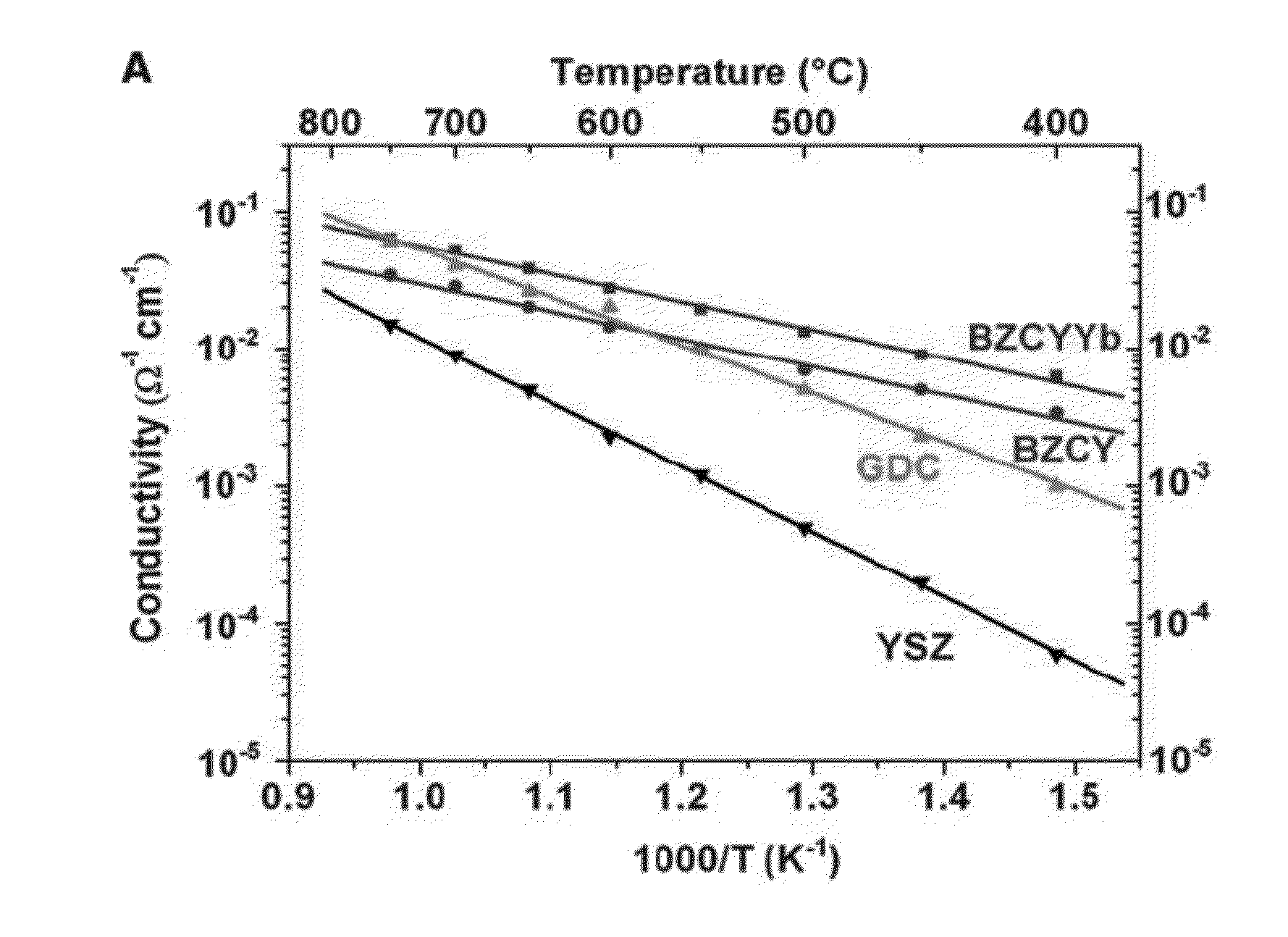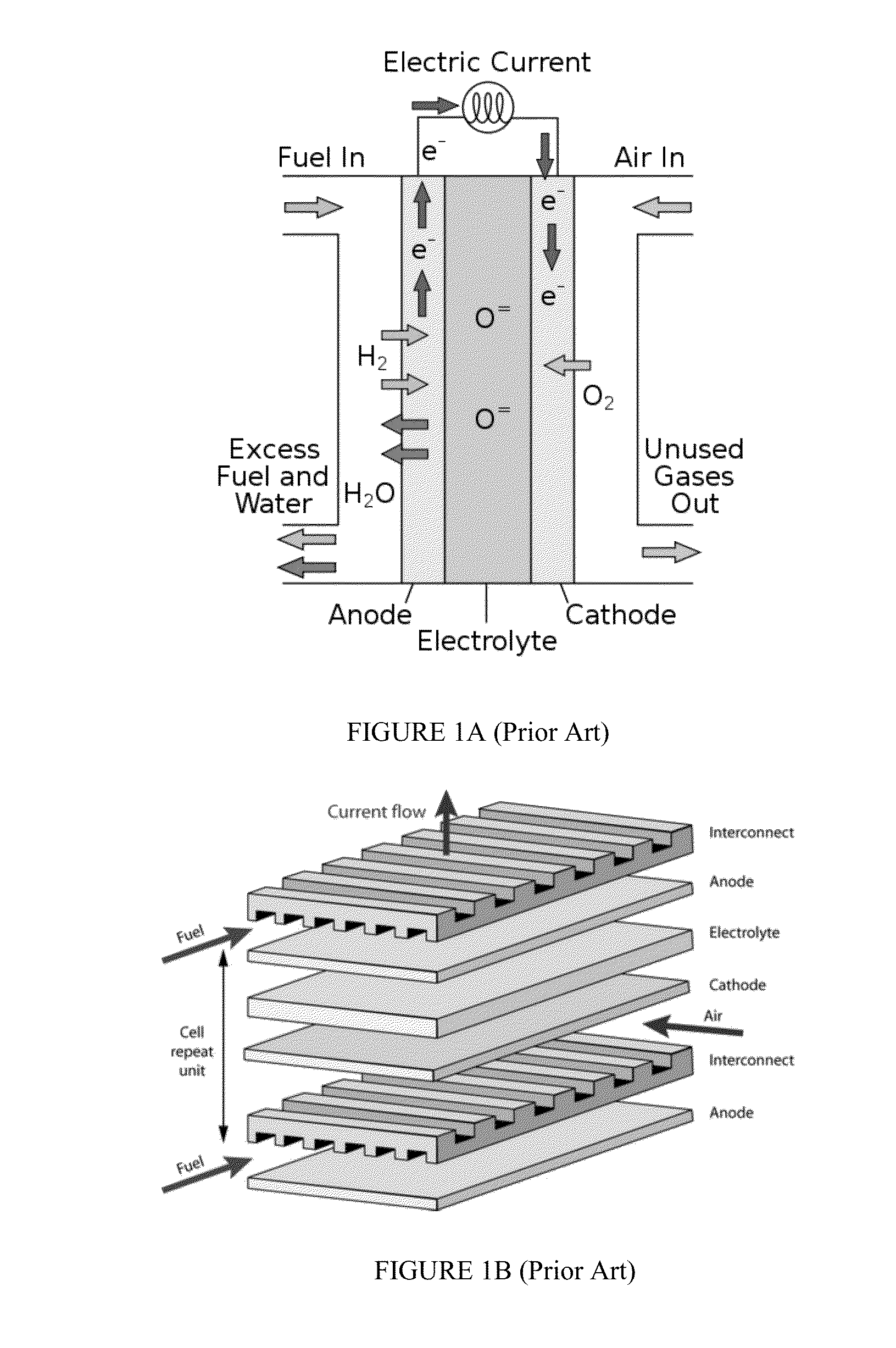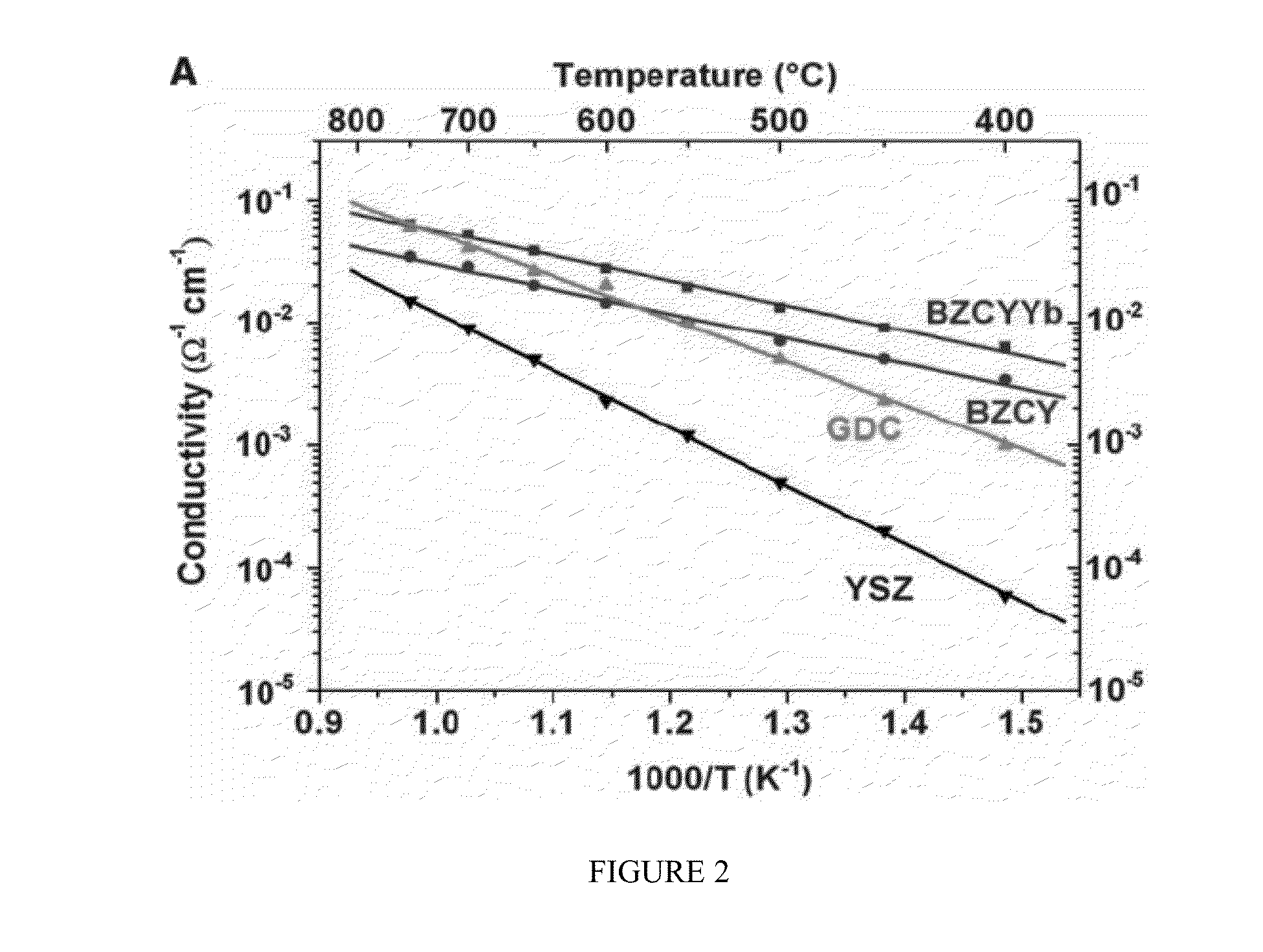Composite Solid Oxide Fuel Cell Electrolyte
- Summary
- Abstract
- Description
- Claims
- Application Information
AI Technical Summary
Benefits of technology
Problems solved by technology
Method used
Image
Examples
Embodiment Construction
[0044]The invention provides a novel composite electrolyte material, method for making the same, as well as fuel cells containing same and uses for such fuel cells. Specifically, the novel composite electrolyte of the present invention comprises porous BZCYYb as the backbone and carbonate as the secondary phase within the pores of BZCYYb so as to provide better ion conductivity at the phase boundaries.
[0045]The weight ratio of BZCYYb in the composite electrolyte may vary, as long as the composite electrolyte can reach higher conductivity as well as current density as compared to non-composite electrolyte. In one embodiment, the weight ratio of BZCYYb in the composite electrolyte ranges from 9:1 to 1:1, but more preferably ranges from 50-90% or 70-80%. In another embodiment, the weight ratio of BZCYYb is about 75%.
[0046]The weight percentage of carbonate in the composite electrolyte also may vary, as long as the composite electrolyte can maintain physical integrity during operation. ...
PUM
| Property | Measurement | Unit |
|---|---|---|
| Temperature | aaaaa | aaaaa |
| Temperature | aaaaa | aaaaa |
| Temperature | aaaaa | aaaaa |
Abstract
Description
Claims
Application Information
 Login to View More
Login to View More - R&D
- Intellectual Property
- Life Sciences
- Materials
- Tech Scout
- Unparalleled Data Quality
- Higher Quality Content
- 60% Fewer Hallucinations
Browse by: Latest US Patents, China's latest patents, Technical Efficacy Thesaurus, Application Domain, Technology Topic, Popular Technical Reports.
© 2025 PatSnap. All rights reserved.Legal|Privacy policy|Modern Slavery Act Transparency Statement|Sitemap|About US| Contact US: help@patsnap.com



